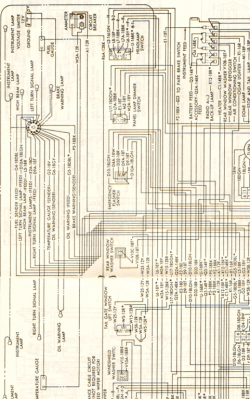cudak888
Well-Known Member
Hello all:
I'm currently trying to figure out what seems to be a power issue to my dash cluster. It's a non-Rallye, horizontal cluster setup in a base '68 Satellite/Belvedere.
At present, the ammeter works, along with the turn signals, brake warning lamp, and oil warning lamp. However, the backlights on the cluster are dead, as is the gas gauge and temperature gauge. I swapped in a new solid-state IVR4 limiter into it this evening, to no change (and when I pulled the old one out, I realized it was a new replacement as well - so I'm not the first to try this).
I've already gone through quite a few threads regarding diagnosis, but - before I go tearing apart the dash and possibly chasing after the wrong thing, I wanted to ask if this particular combination of gauge/light failures might indicate an obvious problem/fix (for instance, after looking at the way the PCB is wired, it seems as if the warning lights wouldn't work at all if the voltage limiter was faulty - correct me if I am wrong - and if this is a correct assumption, I could have probably saved myself the effort and cost of the IVR4).
Let me know if anyone has suggestions.
Thanks!
-Kurt
I'm currently trying to figure out what seems to be a power issue to my dash cluster. It's a non-Rallye, horizontal cluster setup in a base '68 Satellite/Belvedere.
At present, the ammeter works, along with the turn signals, brake warning lamp, and oil warning lamp. However, the backlights on the cluster are dead, as is the gas gauge and temperature gauge. I swapped in a new solid-state IVR4 limiter into it this evening, to no change (and when I pulled the old one out, I realized it was a new replacement as well - so I'm not the first to try this).
I've already gone through quite a few threads regarding diagnosis, but - before I go tearing apart the dash and possibly chasing after the wrong thing, I wanted to ask if this particular combination of gauge/light failures might indicate an obvious problem/fix (for instance, after looking at the way the PCB is wired, it seems as if the warning lights wouldn't work at all if the voltage limiter was faulty - correct me if I am wrong - and if this is a correct assumption, I could have probably saved myself the effort and cost of the IVR4).
Let me know if anyone has suggestions.
Thanks!
-Kurt


 1968 Plymouth Satellite (Belvedere) - Seats Removed
1968 Plymouth Satellite (Belvedere) - Seats Removed














